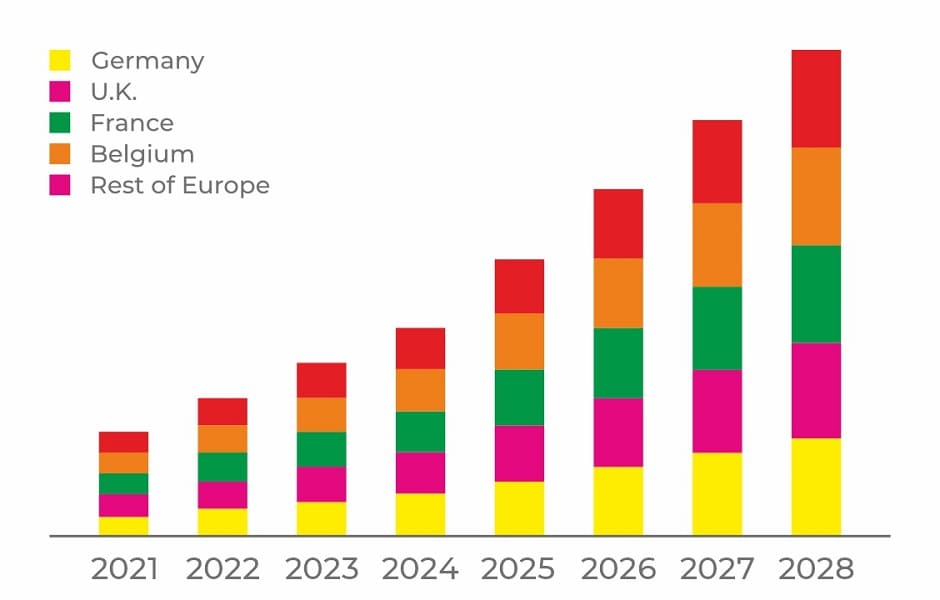[ 07.08.2021 ]

By 2028, the European electronic components market is expected to reach a total value of USD 91,382.26 million
The market for electronic components in Europe is forecast to continue its growth between 2021 and 2028. The market is projected to grow at a CAGR of 7.7%, reaching a total value of $91,382.26 million by 2028. This growth is driven by the rapid development of the industrial sector through the adoption of Internet of Things (IoT) devices.
Industrial IoT devices provide ease of operation and reduce overall system downtime, which helps manufacturing companies improve overall productivity and efficiency. Some manufacturing companies are installing various connected devices to optimise operations through remote monitoring, which is becoming particularly relevant in light of the development of the fourth industrial revolution (Industrial 4.0).
The widespread adoption of IoT devices in numerous industrial applications such as process automation and motion control is expected to drive the market growth of passive and interconnected electronic components over the next seven years.
The growing use of electronics in everyday life is one of the main drivers of the electronic components market. The rapid adoption of electronics in various sectors of manufacturing and science offers new opportunities for market growth. However, constraints in trade policies and material supply chain for various electronic components can prove to be a restraining factor for market growth. In addition, rising material costs for rare metals and components could also be a challenge for the industry. Finally, the impact of Covid-19 on the raw material supply chain could also lead to challenges in the electronic components market.
The processor segment is expected to dominate the electronic components market in 2021, as they are an important part of any device and are manufactured from more expensive materials such as silicon. However, the consumer electronics segment will also have a significant market share due to the ever-increasing demand for consumer electronics such as televisions, refrigerators and washing machines. This is due to the constant technological innovations being introduced in these devices, making them more efficient and user-friendly.
Thanks to its strong manufacturing capacity and extensive use of electronic components in the automotive industry, Germany is expected to dominate the European market for passive and interconnected electronic components by country in 2021 as well as in the coming years. The European market for electronic components is projected to reach a total value of $91,382.26m by 2028. At the same time, the UK market is expected to grow by 4% between 2022 and 2028 and the French market by 5.6%.
It is important to note that the market for electronic components in Europe will continue to grow due to the increasing use of electronics in everyday life, as well as the continuous development and innovation of electronics in home appliances. However, constraints such as trade policy constraints and supply chain issues, as well as the impact of Covid-19 on the raw materials supply chain, must be considered.
Schurter, Infineon Technology AG, and NXP Semiconductors are among the major companies involved in the production of electronic components in Europe. Thanks to numerous contracts and agreements with companies worldwide, the development of the electronic components market is accelerating.
For example, in April 2021, SCHURTER launched the DKIV-1, a compact and lightweight current-compensated inductor series for 1-phase high-current applications on printed circuit boards. The new product will help the company expand its product portfolio and strengthen its market position.
In November 2020, NXP Semiconductors announced a partnership with Amazon Web Services (AWS) to expand its capabilities in connected vehicles. As part of this partnership, the company will provide a secure edge-to-cloud computing solution for its next-generation vehicles. This will help the company accelerate its digital transformation initiative and expand its customer base.
